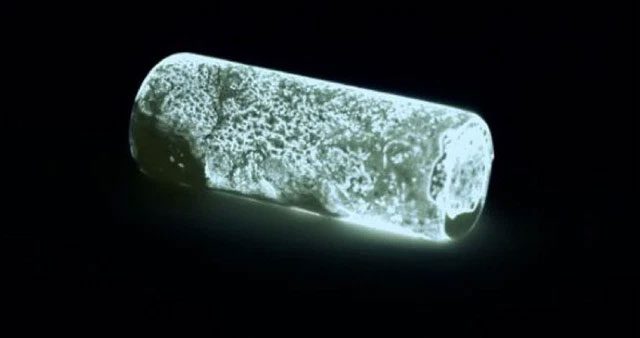If you are a chemistry enthusiast, you are probably familiar with the periodic table of elements. However, the intriguing stories behind these elements may not be as well known.
1. Phosphorus

Hennig Brand’s failed attempts to create gold led to the discovery of phosphorus.
Hennig Brand was a German alchemist who, in his quest for gold, used up to 1,500 gallons of human urine. He evaporated, boiled, and distilled the liquid multiple times, eventually producing a substance that glowed in the dark and ignited. This failed attempt to create gold led to his discovery of phosphorus.
Born in 1630, Brand abandoned his glassmaking job to pursue the legendary Philosopher’s Stone, a mythical stone believed to transform ordinary materials into gold. He conducted experiments and quickly depleted his family’s finances.
Just as he was about to give up, he stumbled upon an unusual book that contained a recipe for creating gold by combining tree resin, potassium nitrate, and concentrated human urine. He experimented with his own urine, but that did not seem sufficient. Consequently, he began collecting urine from others, reportedly gathering nearly 6,000 liters for his experiments.
Most believe that Brand first left the urine under sunlight for weeks, then boiled it until it thickened to a syrup-like consistency. He extracted the red oil from the top and left the other substances in his cellar, cooling them until they turned black. After mixing the red oil with the black substance and heating them, the mixture turned white. When this mixture splattered from the pot and came into contact with oxygen, it produced flames and emitted a garlic-like odor.
Brand believed he had perfected a technique akin to creating gold and kept it secret for six years. However, when he continued his experiments without success in creating gold, he revealed the process to other chemists, and eventually, this substance became known as phosphorus.
2. Astatine, the Rarest Element on Earth

Most of its isotopes have a half-life of only one second or less.
Astatine is the rarest naturally occurring element on Earth, so rare that there are only about 25 grams present at any given time. Most of its isotopes have a half-life of only one second or less, making research extremely challenging. Even its appearance is not definitively known.
Dmitri Mendeleev, the Russian chemist, predicted the existence of an unknown element that could fill the gap for element number 85 on the periodic table in the 1800s, but it was not actually discovered until 70 years later.
The discoverer of astatine remains unknown, but the first claim was made in 1931 by Fred Allison from the Alabama Polytechnic Institute. Other researchers published papers on element 85 for the first time in 1938, but World War II interrupted further research. In 1940, a group of researchers from the University of California, Berkeley, successfully made the first recognized discovery.
Astatine is the least reactive and most metallic of the halogen group elements. However, many properties of this element remain unknown, such as its color. Researching element 85 is difficult, but scientists believe it may be used in cancer treatment.
3. The Name Cobalt Comes from a German Folklore Goblin

Cobalt is a blue transition metal.
The name cobalt originates from a goblin in German folklore called “kobold.” This is because when medieval miners discovered cobalt, they tried to smelt it thinking it was silver. When it released toxic gas, they believed it was the goblin playing tricks on them.
Cobalt is a blue transition metal used in magnets, high-tech turbines, and even in cancer treatment.
German miners, around 1500 AD, were the first to find cobalt ore near Saxony. They thought it was silver and tried to melt it, but oddly, when heated, it did not melt into silver; instead, it produced only toxic smoke. After inhaling this gas, some miners fell ill and even died.
Since the miners were not chemists, they did not understand what was happening and regarded the substance as demonic. They even believed that a kobold had spoiled their silver. Therefore, this substance was largely known at the time as the “goblin of the mine.”
In the 1730s, Swedish chemist Georg Brandt enhanced the study of this substance by isolating it. He named the newly discovered element “cobalt.”
4. Promethium Named After a Greek Titan

Promethium is a rare earth element with high radioactivity.
Promethium is named after a Greek Titan who stole fire from Zeus and gave it to humanity. It is a rare earth element with high radioactivity that glows in the dark and is only found in byproducts of uranium fission reactions. Because of this, it is primarily used for research.
Bohuslav Brauner was the first to discover the possibility of an unknown element in 1902. In 1914, British scientist Henry Moseley confirmed the x-ray signature of the unknown element. It was not until 1945 that it was first identified as a distinct element by Manhattan Project researchers studying fuel for an atomic bomb.
This element emits beta radiation. It appears silvery-white, and its salts glow in the dark with a faint blue or green light. It seems that no Promethium may have ever existed in the Earth’s crust, although it had decayed at least 10,000 years ago; however, it has been detected in the spectrum of a star 520 light-years away in the Virgo constellation.
5. Helium

The name of this element comes from the Greek sun god – Helios.
The only element in the periodic table not discovered on Earth first is helium. Its name derives from the Greek sun god, Helios, as it was found while analyzing the sun’s spectrum.
Helium is a colorless, odorless noble gas and is the second most abundant element in the universe.
French astronomer Pierre Janssen observed the sun’s atmosphere during a total solar eclipse on August 18, 1868. He reported seeing a strange yellow line but could not identify its source. A few months later, British astronomer Sir Norman Lockyer delved deeper into the matter and concluded that this line was the signature of an unknown element. He named it “helium” after the Greek sun god. The presence of this element on Earth and its atomic weight was only confirmed in 1882 by Swedish chemists.
Even though it is the second most abundant element in the universe, it only constitutes 0.0005% of the Earth’s atmosphere. Qatar is the second-largest producer of helium, following the United States, which produces 75% of the total helium available on Earth.
Due to its superfluid properties, helium is quite useful for scientists in pushing the boundaries of their understanding of physics and chemistry.





















































